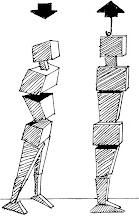Ineresting Articles:
Living to 100: What’s the Secret?
Harvard Health Publications
Harvard Health Letter
www.health.harvard.edu
Centenarians may well have a genetic head start on most of us, but in his 1999 book Living to 100, Perls argues that we can make choices that may help us catch up. Of course, we don’t have complete free will over these choices; behavior of almost all kinds has a genetic component. Still, there are some lessons to be learned from the do’s and don’ts of centenarians:
• They don’t smoke or drink heavily.
• Those who had smoked didn’t do so for long.
• They gained little or no weight during adulthood.
Being overweight makes people more vulnerable to many life-threatening
illnesses, including heart disease, diabetes, cancer, and stroke.
• They don’t overeat.
Okinawan centenarians consume 10%–20% fewer calories per day than typical Americans. And in animal studies, calorie restricted diets have consistently increased the life span. The old Okinawans consume less fat, too. About 26% of their energy intake comes from fat, compared with 30% or more for Americans. And more of that fat is beneficial—omega-3 fatty acids and the unsaturated fats found in vegetable oils.
• They eat many fruits and vegetables.
The Okinawans have an average of seven servings a day.
• They get regular physical activity for as long as they are able. Strength-building activities, such as climbing stairs or lifting small weights, are especially beneficial because they help slow the age-related loss of muscle mass.
• They challenge their minds. Stimulating mental activity may help prevent age-related thinking and memory problems by stimulating communication between brain cells. Particularly among elderly men, decreased cognitive performance is strongly associated with mortality.
• They have a positive outlook. Perls says centenarians seem to have personalities that shed stress easily. An inability to control emotional stress has been linked to memory loss and heart disease.
• They are friendly and maintain close ties with family and friends. Not surprisingly, positive relationships are associated with lower rates of depression. And lower rates of depression may result in lower rates of heart
disease. Many researchers think that people could add up to a decade to their lives if they emulated the centenarians. And, from what we know so far, they aren’t doing anything
(for full text please visit the website)
What's in a Stretch?
By Julie Gudmestad
http://www.yogajournal.com/for_teachers/2376?page=1
(for full text please visit the website)
Important as it is, stretching is easy to misunderstand or overdo. Help your students—and yourself—learn the basics behind this crucial element of yoga.
Ligaments, which join bone to bone, and tendons, which join muscle to bone, are comprised primarily of nonelastic fibers.
On the other hand, fascia (another type of CT) can be quite flexible, as it contains more elastic fibers. It's found throughout the body and can vary in size from microscopic, as in the tiny fibers that help hold the skin onto underlying bones and muscles, to large sheets, such as the iliotibial band that runs from the side pelvis to the outer lower leg and helps stabilize the torso over the leg while standing. Basically, fascia holds all of the layers of the body together, including binding the muscle cells into bundles and bundles into distinct muscles that we know by name. It's been said that if all other types of cells were somehow dissolved, leaving only fascia, a clearly recognizable body would remain.
Physical therapy research has shown that in order to change the structure of fascia, you would need to hold a pull on it for 90–120 seconds. This information also supports the idea of holding a longer, gentler stretch, since who wants to sit through two minutes of pain?
More Healthy Sites
Subscribe to:
Post Comments (Atom)





No comments:
Post a Comment